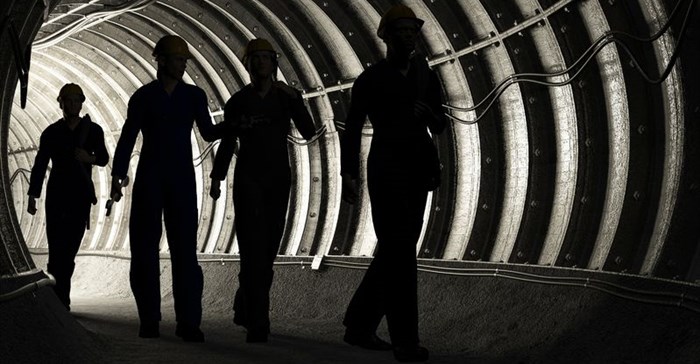Local cost pressures, labour action, and a continuing downswing in commodity prices were among the challenges the South African mining industry had to face this year, resulting in shrinking margins and impairment provisions.
This is according to PwC's seventh edition of 'SA Mine', a series of publications that highlights trends in the South African mining industry.
The mining industry continues to be marred by labour unrest with four gold mining companies continued to be locked in a three-month wage 'stalemate' with unions and the pressures of a recent coal strike mounting.
Market capitalisation for the top 35 companies declined to R414bn as at 30 June 2015 (compared to R675bn as at 30 June 2014). The decline continued when compared to market capitalisation as at 30 September 2015 of R304bn, resulting in an aggregate decline of R371bn when compared to 30 June 2014.
Iron and coal prices
Although iron ore and coal prices were the most severely impacted, platinum and gold mining companies have not escaped the continuing downward slide in commodity prices. SA's main revenue generating commodities haven't experienced real prices as low as those experienced in 2015 in ten years, and it is not certain yet if or when the prices will start to recover.
Despite a continued reduction in prices, coal remains the highest earning commodity in South Africa. Coal had a solid performance over the last decade, with marginal increases in production in the last few years. The long-term decline in gold production was temporarily halted in the last two years. This decline is indicative of the ever-increasing depths of existing mines, technical difficulties experienced by start-up operations and a continually growing base.
Platinum group metal production has been severely impacted by industrial action since 2012 and by mine enclosures in the low-price environment. In the absence of a meaningful price increase, it is unlikely that platinum production levels will increase from the current lower base.
This year's cash flow is the worst since the financial crisis in 2008 and reflects the margin pressure and liquidity concerns experienced by the industry. The free cash flows generated were insufficient to make existing borrowing repayments, let alone distributions to shareholders. Revenue only increased by a mere 4% or R12bn on last year.
Operating costs
Operating expenses increased by 14%, which is higher than the 13% of the previous financial year. However, when companies affected by the platinum strike are excluded, the increase climbs to 15%. Labour costs still remain the biggest cost component in the local mining industry. The share of labour costs decreased marginally from 47% to 45% in the current year.
The 2014 period saw record levels of impairment charges being recorded within the mining industry. In 2015, the industry saw impairment charges as a percentage of capital expenditure reduced to 40%, which is still above the 35% four-year average. Net profit reduced by 75% to a mere R2bn despite a R26bn reduction in impairment provisions. The EBITDA margin is 22% in the current year, down 7% on last year.
Despite the challenges it faces, the mining industry continues to be a significant contributor of value. The monetary benefit received by each stakeholder in the industry is usually summarised in mining companies' value added statements.
Employees received 39% (2014: 37%) of the value created. The impact of the increased wages, relative stable employment numbers and lower price environment has contributed to this increase. The state received 18% (2014: 20%) of value created, consisting of direct taxes, mining royalties and tax on employee income deducted from employees' salaries. The actual contribution received by the state is significantly higher, however, with direct taxes like VAT, import and export duties also being collected.
Distributions to shareholders represented 15% (2014: 11%) of total value increased. If Kumba Iron Ore's results are excluded, the dividend percentage declines to 3% (2014: 2%).




























